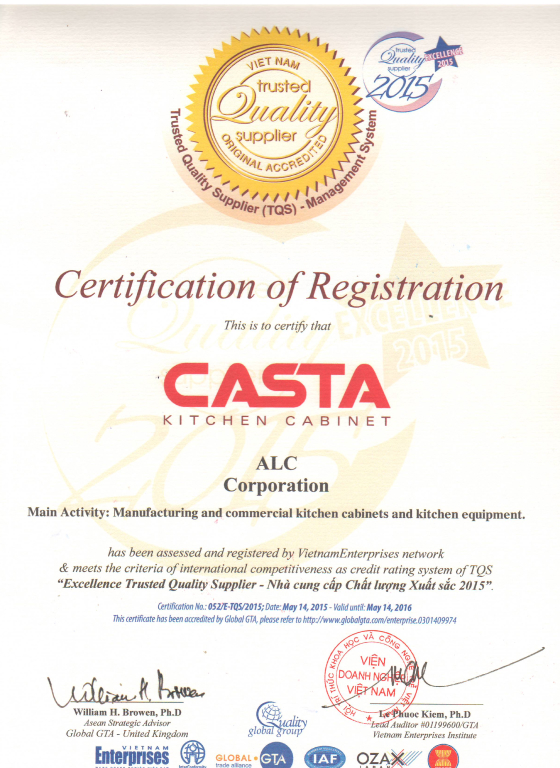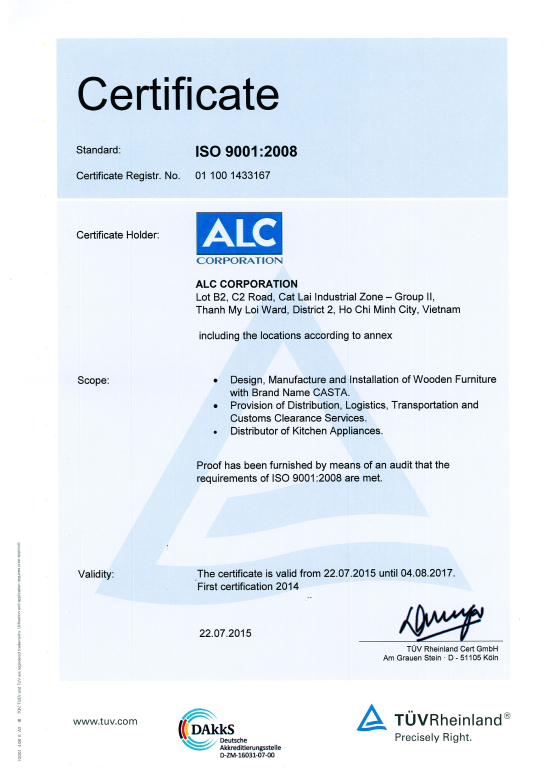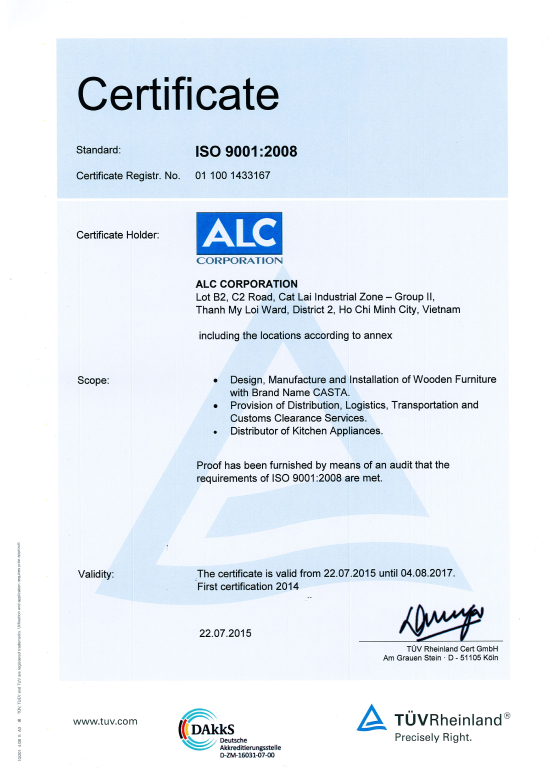Formaldehyde-free cabinets have become a significant focus for contractors, furniture brands, and companies in the cabinet industry.
These products are increasingly sought after due to the rising awareness of the health risks associated with formaldehyde, which is commonly found in traditional cabinetry materials. Formaldehyde is a colorless, strong-smelling gas often used in the manufacture of building materials and household products. It’s prevalent in adhesives that bond together pressed wood products such as MDF, particleboard, and hardwood plywood—all common materials in traditional cabinets.
As formaldehyde off-gases from these materials over time, it releases volatile organic compounds (VOCs) into the air, which can contribute to indoor air pollution. This is especially concerning in closed spaces like kitchens and offices, where people spend extended periods. Exposure to formaldehyde in cabinets can lead to respiratory issues, allergic reactions, skin irritations, and, over prolonged periods, has been linked to more severe health conditions such as cancer.
Given these concerns, many consumers and businesses are now prioritizing formaldehyde-free alternatives. These cabinets are manufactured without the use of harmful formaldehyde-based adhesives and finishes, creating healthier indoor environments. This shift toward formaldehyde-free kitchen cabinets aligns with a broader movement toward green building practices and eco-friendly manufacturing.
Table of Contents
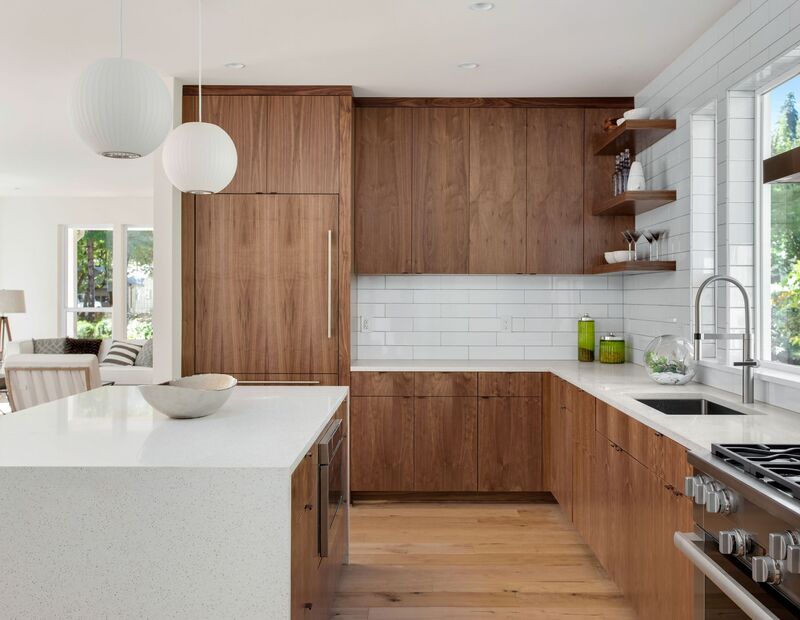
Why Formaldehyde-Free Cabinets Matter
Health and Safety
The importance of formaldehyde-free cabinets cannot be overstated, especially when considering the health and safety of those who live or work in environments filled with traditional cabinetry. Formaldehyde is a known carcinogen, classified by the U.S. Environmental Protection Agency (EPA) as a human carcinogen under conditions of prolonged exposure. This is particularly relevant in closed indoor environments where cabinets and other furniture containing formaldehyde are prevalent.
For contractors and companies, providing safer alternatives means not only protecting the health of their clients but also building trust with health-conscious customers. Today’s homeowners are more informed about indoor air quality and the potential dangers of VOC emissions. The use of formaldehyde-free kitchen cabinets ensures that indoor spaces remain free from harmful emissions that could compromise the well-being of occupants.
Regulations and Standards
Understanding the regulations around formaldehyde emissions is crucial for companies looking to stay competitive in the market. The California Air Resources Board (CARB) was one of the first entities to implement strict formaldehyde emission limits, particularly targeting products such as cabinets. CARB introduced two phases:
- CARB Phase 1 (P1): Introduced to limit formaldehyde emissions from composite wood products.
- CARB Phase 2 (P2): A more stringent standard that reduced permissible emission levels even further.
Europe: E1 and E0 Standards
In Europe, the E1 and E0 standards are benchmarks for formaldehyde emissions:
- E1 Standard: Limits formaldehyde emissions in wood products to a maximum of 0.1 parts per million (ppm).
- E0 Standard: Even stricter, with emissions capped at 0.05 ppm or less.
European regulations ensure that cabinets and other furniture are safe for indoor environments and meet high environmental and health expectations.
Japan: Japanese Industrial Standard (JIS)
The Japanese Industrial Standard (JIS) provides critical benchmarks for quality and safety, particularly in formaldehyde emissions for indoor wood products. The JIS A 1460 standard defines acceptable limits for formaldehyde emissions in wood-based materials, with the F★★★★ (F4 Star) standard being the highest grade, allowing formaldehyde emissions of less than 0.3 mg/L. This is equivalent to or even stricter than European E0 standards, ensuring that cabinetry in Japan meets rigorous health safety regulations.
JIS-certified cabinets are a preferred choice in the Japanese market, where formaldehyde emissions are closely monitored to protect indoor air quality. Companies that adhere to JIS standards ensure that their products meet high expectations for both quality and environmental responsibility, making them ideal for contractors and businesses targeting the Japan market.
Overview of Global Standards Comparison:
- United States (CARB P2): 0.05 ppm formaldehyde emissions limit.
- Europe (E1 Standard): 0.1 ppm maximum formaldehyde.
- Europe (E0 Standard): 0.05 ppm or less.
- Japan (JIS F★★★★): Less than 0.3 mg/L formaldehyde emissions.
The Impact on Indoor Air Quality
In homes and offices, cabinetry plays a major role in indoor air quality, particularly in spaces with limited ventilation. The off-gassing of formaldehyde from traditional cabinets can significantly reduce air quality, causing or exacerbating conditions like asthma, allergies, and other respiratory issues. With formaldehyde-free cabinets, businesses can ensure their spaces remain free from these harmful chemicals, contributing to healthier environments for workers and residents alike.
Understanding the Materials in Formaldehyde-Free Cabinets
Formaldehyde-free kitchen cabinets are made from materials designed to ensure that they do not release harmful VOCs into the air.
This involves selecting the right type of wood and bonding agents. Many traditional cabinets are made from MDF (medium-density fiberboard), particleboard, or plywood bonded with adhesives that contain formaldehyde.
By choosing formaldehyde-free materials, manufacturers ensure that no toxic gases are emitted during the product's lifetime.
Wood Selection: The Base of Healthy Cabinets
One of the key elements in formaldehyde-free cabinets is the use of FSC-certified wood. The Forest Stewardship Council (FSC) certification ensures that the wood used in the cabinets comes from responsibly managed forests.
Solid wood, which naturally does not contain formaldehyde, is often preferred for formaldehyde-free products.
Additionally, bamboo and other rapidly renewable resources offer sustainable alternatives for cabinetry.
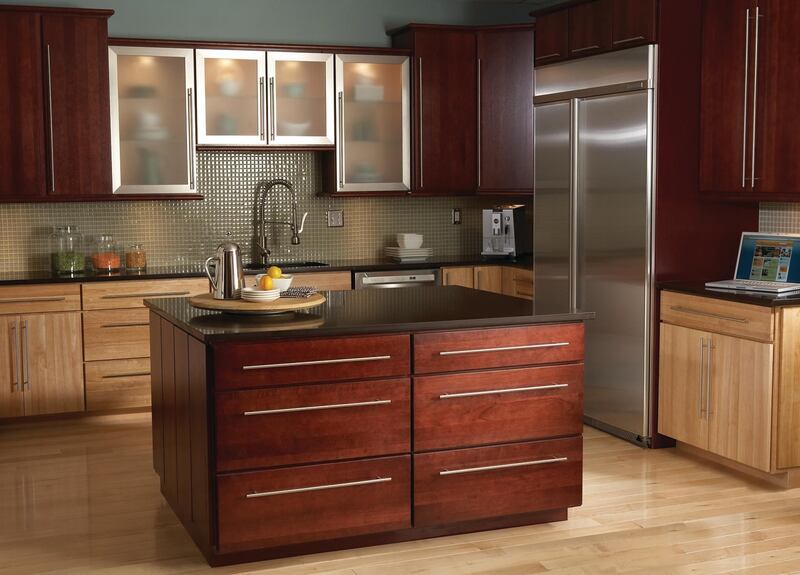
Engineered wood products like MDF and plywood can also be used in formaldehyde-free cabinets, but with a critical difference— the adhesive used to bond the wood must be formaldehyde-free. Many manufacturers now use alternative adhesives, such as soy-based or phenol-formaldehyde resins, that do not emit VOCs. These materials maintain the structural integrity of the cabinets while ensuring they are safe for indoor air quality.
Non-Toxic Finishes and Coatings
Another essential component of formaldehyde-free kitchen cabinets is the finish. Traditional varnishes, lacquers, and paints used on cabinets often contain high levels of VOCs, including formaldehyde. These chemicals can continue to release toxic gases long after the cabinets have been installed. To ensure a truly formaldehyde-free product, manufacturers use low-VOC or zero-VOC finishes, which are water-based and free from harmful solvents.
These non-toxic finishes are available in a variety of styles, allowing homeowners and businesses to choose from gloss, matte, or satin looks without compromising on safety. This ensures that formaldehyde-free kitchen cabinets not only contribute to a healthier indoor environment but also offer the same aesthetic versatility as traditional cabinets.
Benefits of Choosing Formaldehyde-Free Cabinets
The decision to opt for formaldehyde-free cabinets goes beyond aesthetics—it directly impacts the health and safety of the home or business environment.
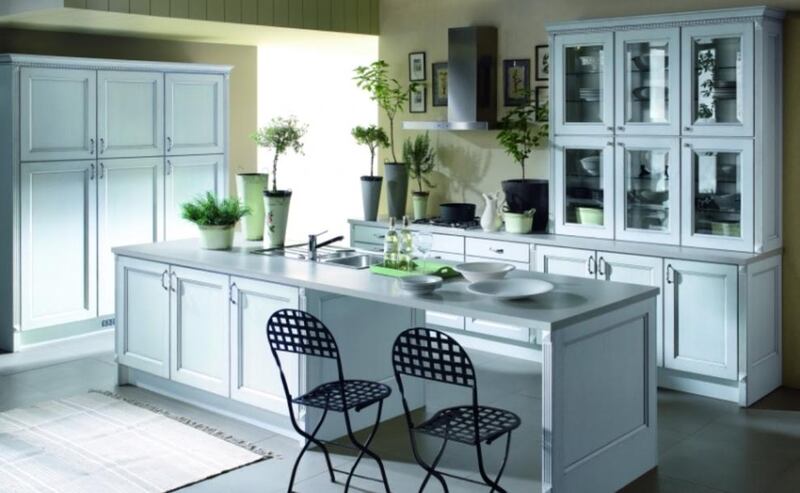
Here are the primary benefits of making this choice:
- Improved Indoor Air Quality: Traditional cabinets can off-gas formaldehyde for years, leading to poor air quality and potential health risks. Formaldehyde-free kitchen cabinets eliminate this risk, creating a cleaner, healthier indoor environment.
- Durability and Longevity: High-quality materials, such as solid wood and engineered wood with formaldehyde-free adhesives, ensure that these cabinets are just as durable, if not more so, than their traditional counterparts. They can withstand the wear and tear of daily use while maintaining their structural integrity.
- Sustainability: Many formaldehyde-free cabinets are made from sustainably sourced materials, including FSC-certified wood. These cabinets are not only better for your health but also better for the planet, as they help reduce deforestation and promote responsible forestry practices.
- Peace of Mind: For homeowners with children, elderly residents, or individuals with respiratory conditions, the peace of mind that comes with knowing your cabinets are free from harmful chemicals is invaluable. Formaldehyde-free kitchen cabinets ensure that your living spaces remain safe for everyone.
Formaldehyde-Free Cabinets vs. Traditional Cabinets
When comparing formaldehyde-free cabinets to traditional cabinets, it’s essential to understand both the short-term and long-term benefits.
| Feature | Formaldehyde-Free Cabinets | Traditional Cabinets |
| Indoor Air Quality | Zero or minimal VOCs | Higher formaldehyde emissions |
| Durability | Strong, high-quality materials | May weaken with formaldehyde adhesives |
| Health Impact | Safe for sensitive individuals | Potential respiratory and long-term effects |
| Cost | Slightly higher, but long-term benefits | Lower upfront, but potential health risks |
| Customization | Wide range of non-toxic finishes | Traditional materials more widely available |
Traditional cabinets are often cheaper to manufacture and purchase, as they utilize widely available materials and formaldehyde-based adhesives. However, this comes with hidden costs, such as the long-term health risks posed by formaldehyde emissions. Formaldehyde-free cabinets, while potentially more expensive upfront, provide long-term savings by promoting better health, reducing medical expenses associated with poor indoor air quality, and contributing to a healthier living environment.
Casta Cabinetry’s Expertise in Formaldehyde-Free Solutions
At Casta Cabinetry, we understand the importance of providing not only beautiful but also safe and environmentally responsible cabinetry.
Our commitment to formaldehyde-free solutions ensures that our customers receive high-quality cabinets that meet the strictest global standards for indoor air quality.
Certifications and Compliance
Casta’s CARB compliance and adherence to class E1 formaldehyde standards underscore our commitment to creating products that are safe for both people and the planet.
We rigorously test all of our products to ensure they meet or exceed emission standards.
These certifications not only protect consumers but also provide peace of mind for contractors and businesses who want to ensure they are offering the best products to
their clients.
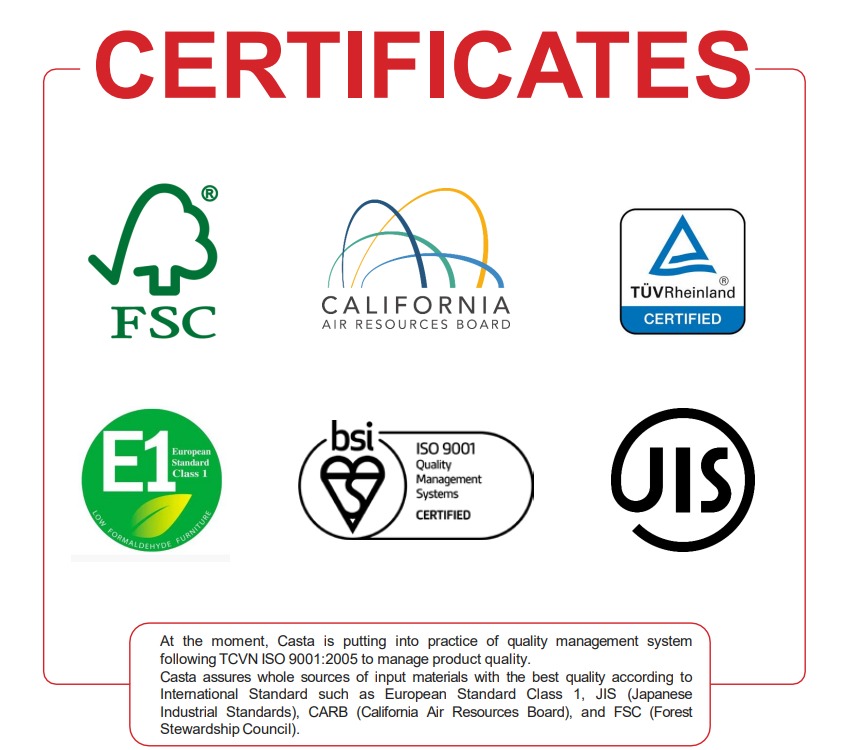
Sustainability Practices
At Casta - the leading kitchen cabinets factory in Vietnam, we also focus on sustainability by sourcing wood from responsibly managed forests and using non-toxic finishes.
By reducing the environmental impact of our production processes, we contribute to the growing demand for eco-friendly products in the construction and furniture industries.
Choosing Casta means choosing a partner dedicated to the health of both people and the environment.
Who Should Choose Formaldehyde-Free Cabinets?
Homeowners: If you have children, elderly family members, or individuals with respiratory issues, formaldehyde-free kitchen cabinets can provide peace of mind. They ensure a healthier living environment, free from harmful chemicals that can aggravate health conditions.
Contractors and Builders: For those working on LEED-certified projects or eco-conscious renovations, formaldehyde-free cabinets are an essential component in meeting green building standards. Offering these options to clients demonstrates a commitment to health and sustainability, providing an edge in the competitive building industry.
Furniture Brands and Companies: Brands that prioritize sustainability and health can enhance their reputation by offering formaldehyde-free products. As more consumers demand eco-friendly solutions, aligning with these values can increase market share and customer loyalty.
How to Identify and Purchase Formaldehyde-Free Cabinets
Knowing how to identify and purchase formaldehyde-free cabinets is crucial for ensuring that your investments contribute to a healthier living space. Here are some clear guidelines to help make the process easier:
- Certifications: Look for CARB compliance, E1/E0 European standards, and FSC-certified wood to ensure that your cabinets meet stringent health and environmental standards.
- Questions to Ask: When purchasing, ask manufacturers about the materials, adhesives, and finishes they use. Inquire about certifications and request documentation to ensure that the products you’re buying are truly formaldehyde-free.
- Working with Casta Cabinetry: At Casta, we make the purchasing process simple and transparent. From selecting materials to final delivery, we provide guidance every step of the way, ensuring that you receive the highest-quality, formaldehyde-free kitchen cabinets that meet your exact specifications.
Conclusion
Investing in formaldehyde-free cabinets is a forward-thinking decision that promotes health, sustainability, and long-term value. For contractors, furniture brands, and companies focused on providing safe, eco-friendly solutions, formaldehyde-free kitchen cabinets are an excellent choice. By choosing Casta Cabinetry, businesses can ensure that they offer products that meet the highest standards for safety, quality, and environmental responsibility.
FAQ
What is formaldehyde, and why is it used in cabinets?
What is the E1/E0 European Formaldehyde Emission Standard?
How do I know if my cabinets are truly formaldehyde-free?
Are formaldehyde-free cabinets more expensive?
How does Casta ensure its cabinets are formaldehyde-free?
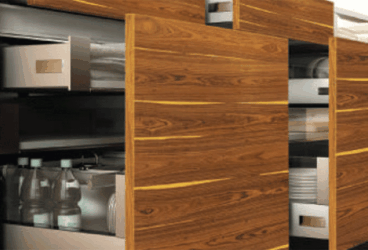
MDF vs Plywood for Kitchen Cabinets – Which is Better?...
MDF vs Plywood for kitchen cabinets is one of the most important decisions contractors and furniture brands must make wh...
11/14/2025 | David Nguyen
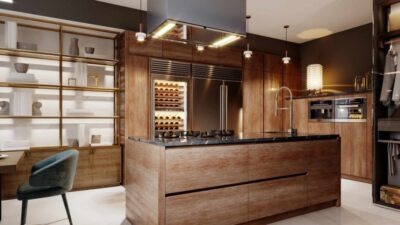
Plywood Kitchen Cabinets: Pros and Cons Explained for Contra...
Plywood kitchen cabinets are now one of the most preferred options in modern kitchen manufacturing, combining durability...
11/12/2025 | David Nguyen
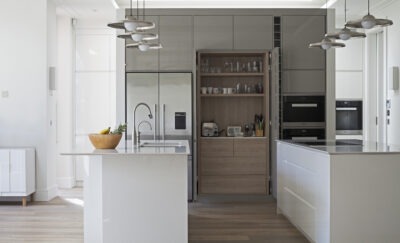
Best Italian Kitchen Cabinets: Modern Design, Precision Craf...
Italian kitchen cabinets represent the gold standard in modern kitchen design — celebrated for their craftsmanship, slee...
10/29/2025 | David Nguyen
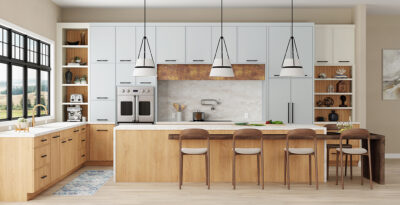
European vs American Kitchen Cabinets: Key Differences &...
European vs American kitchen cabinets is a core decision for anyone specifying cabinetry for modern buildings or homes. ...
10/27/2025 | David Nguyen
Contact us
Casta is always ready to listen and answer all customers' questions
